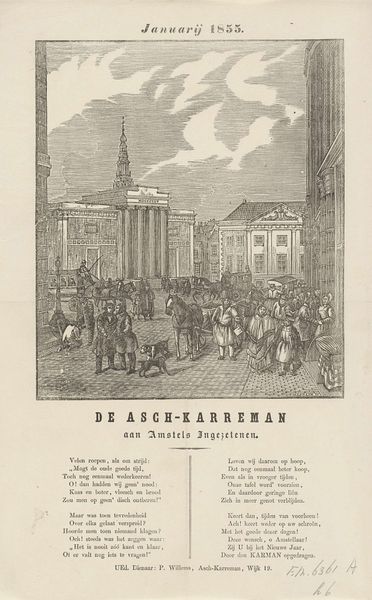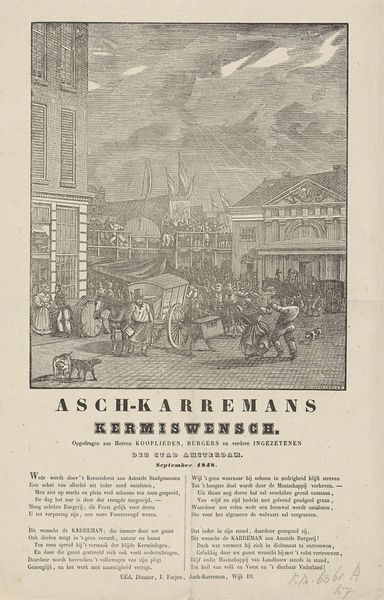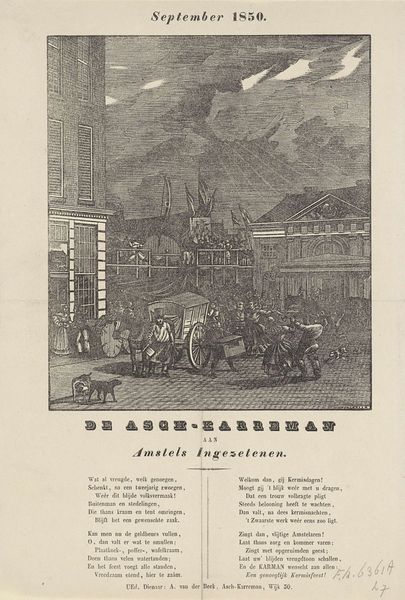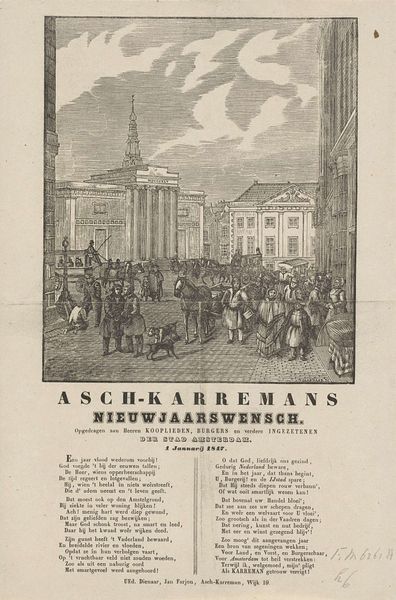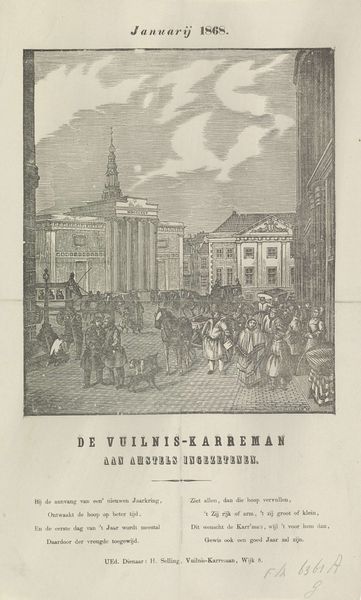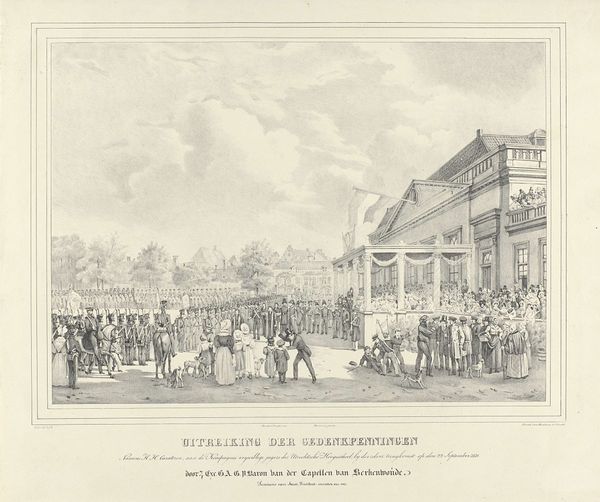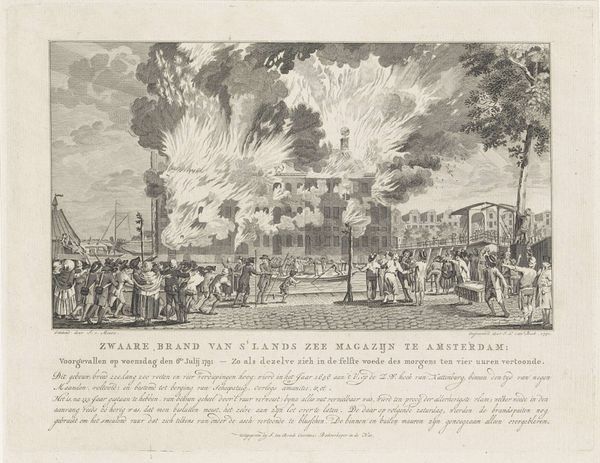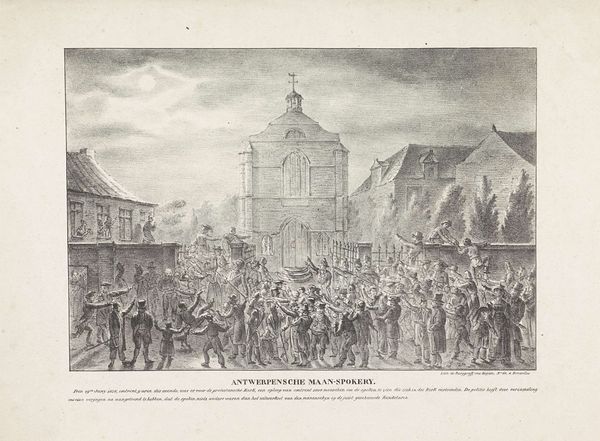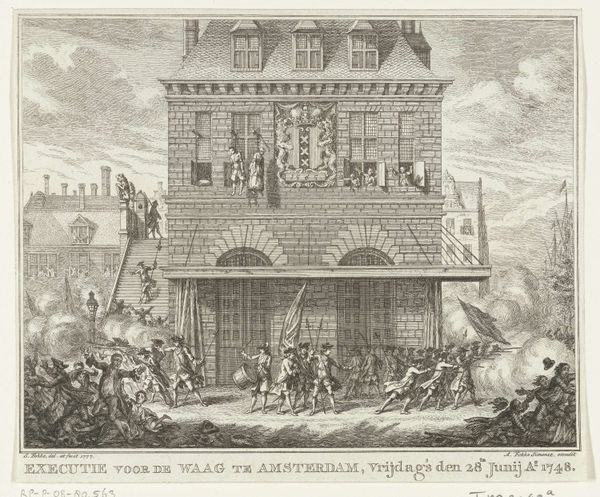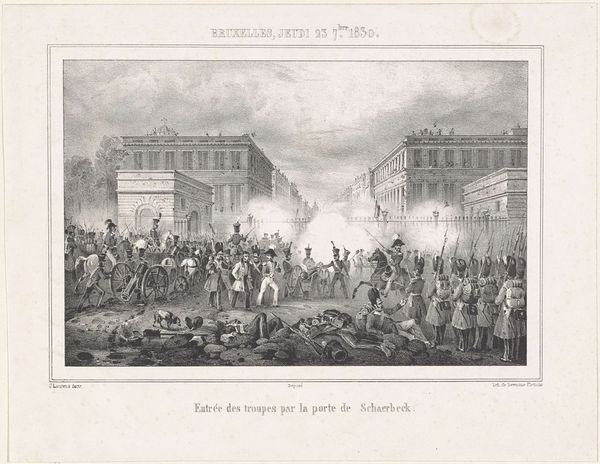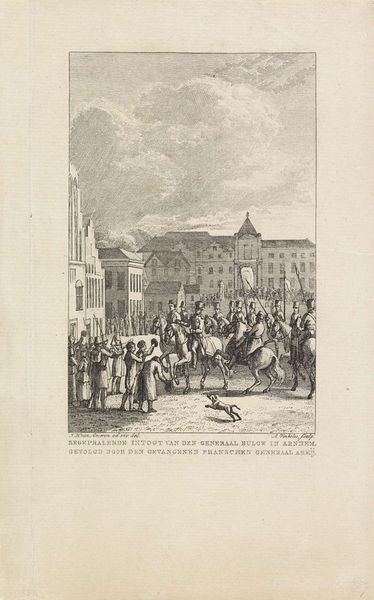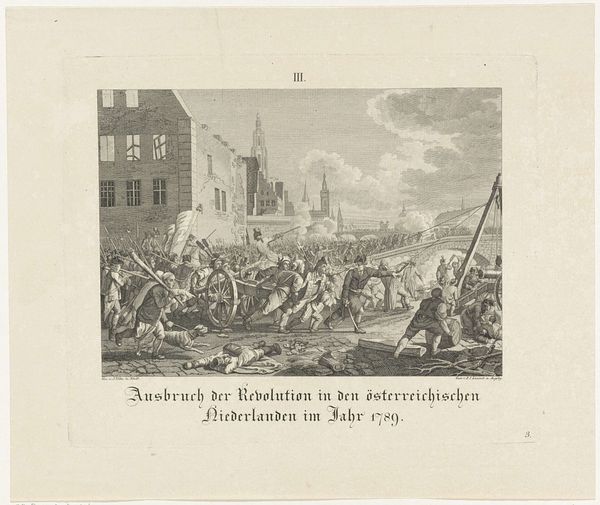
Kermisprent van de Amsterdamse askarrenmannen voor het jaar 1870 1870
0:00
0:00
print, engraving
# print
#
cityscape
#
genre-painting
#
engraving
Dimensions: height 337 mm, width 211 mm
Copyright: Rijks Museum: Open Domain
Curator: This is a delightful piece titled "Kermisprent van de Amsterdamse askarrenmannen voor het jaar 1870," a print from 1870 housed in the Rijksmuseum. Essentially, it's an engraving depicting the ash cart men of Amsterdam. Editor: My first impression is… busy! And charmingly chaotic. It's a street scene teeming with people, carts, a few curious dogs even. A bit like a visual news bulletin with maybe too many headlines? Curator: Exactly. These prints, often published annually, served multiple functions. They offered a snapshot of everyday life, acknowledged the often-overlooked labor of the ash cart men - essential for urban sanitation – and functioned almost like a trade card, complete with verses and details about the "company." Editor: A company Christmas card but with, shall we say, less polished artwork! The light in the background, radiating behind the crowds gives this quite normal daily labour an elevated and even divine quality to their task! Curator: That "divine" quality speaks to a certain societal need to ennoble labor, perhaps especially in a rapidly industrializing city. The city celebrated these figures who removed waste and filth. And that textual component - in addition to offering New Year’s greetings, they also bolstered civic pride! Editor: I do love how crammed this little scene is with details. The way the artist captures all this activity of regular workers is both sweet and sincere. How conscious do you think that message about labour was back then though? Was it an act of celebrating or did it play in on the sentimentality of normal citizens, for instance? Curator: I think it was a blend. Certainly, there’s an element of sentimentalizing, playing into tropes of the "deserving" working class, and these ash cart men were contracted to city officialdom as essential personnel, responsible for cleanliness, hygiene and even preventing fire hazards in a dense urban context. These factors added complexity into both the roles the men played in the city and in how they are now perceived through a celebratory art. Editor: It definitely brings up interesting points regarding civic virtue, essential workers – things we grapple with today as well, surprisingly. I love that an image commemorating trash collectors speaks to that! It makes me reflect. Curator: And through the context in this "Kermisprent", we’re able to study this humble art, how labor and society were portrayed during this era, and this offers us a nuanced window into both!
Comments
No comments
Be the first to comment and join the conversation on the ultimate creative platform.
